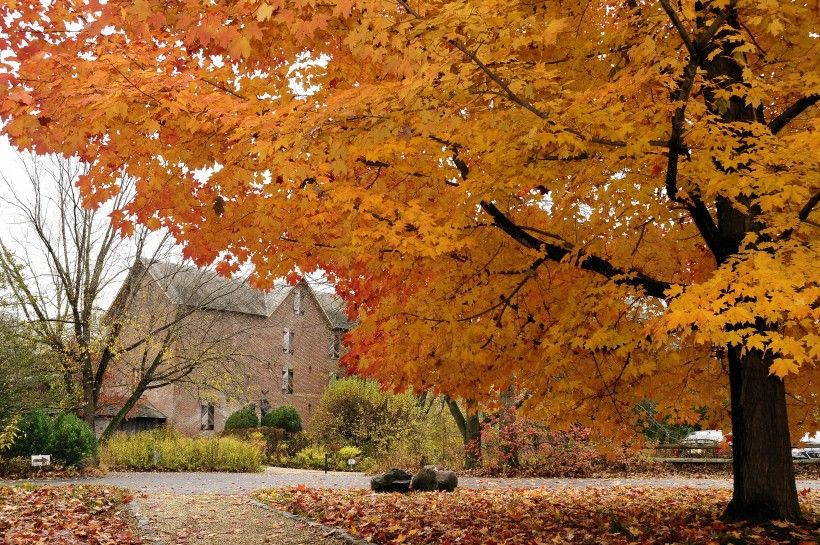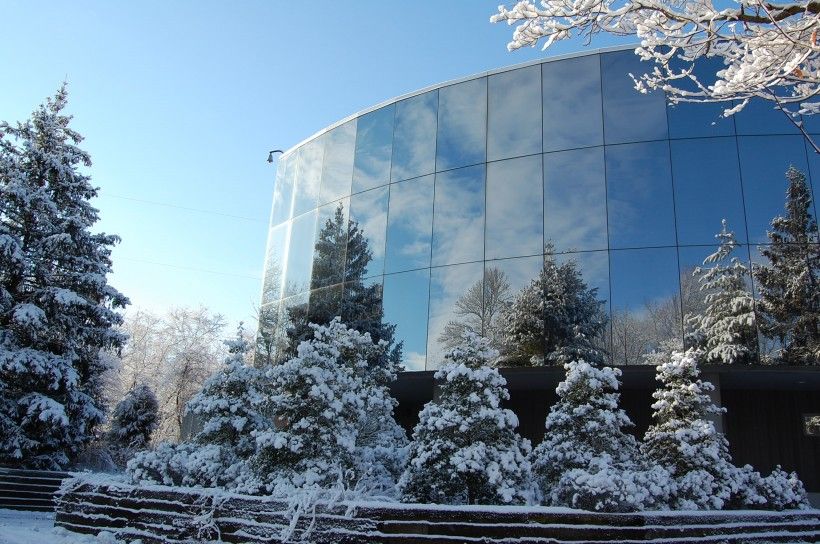Fall
One of the earliest fall foliage displays, and one of the showiest, is the Black Gum or Tupelo (Nyssa sylvatica), whose leaves change from yellow to orange to scarlet to purple-sometimes bearing all four colors at the same time. Shining Sumac (Rhus copallina) is distinguished by crimson to deep purple foliage and clusters of dark red fruit. The Downy Serviceberry (Amelanchier arborea) is a plant for all seasons with apple blossom-like flowers in spring, clusters of berries which turn deep purple in summer, brilliant red and yellow foliage in fall, and smooth grey bark with vertical stripes in winter.

Yellow Tickseed Sunflowers (Bidens polylepis) provide a favorite food for goldfinches which feast on their seeds. Blue-Stemmed Goldenrod (Solidago caesia) and Canada Goldenrod (Solidago canadensis) provide a colorful show in late August and September (even into October). Pink Turtleheads (Chelone lyonii) bear rose-colored flowers, shaped like heads of turtles with their mouths gaping.
Winter
Although the gardens are more subtle in the winter, they are by no means colorless. Less obvious plants become fascinating. This season is highlighted by evergreens and berry-bearing plants common to the region. In addition to providing seasonal greens traditionally used to decorate homes, American Holly (Ilex opaca), with bright red fruit, and Yellow Fruited American Holly (Ilex opaca `Xanthocarpa'), are sources of food for many species of birds. These hollies and the dark-blue berried InkberryHolly (Ilex glabra) are either male or female, though only the female plants bear fruit.

Sycamore or Buttonwood Trees (Platanus occidentalis) are remarkable for their smooth bark, which peels to different shades of white, brown, green, and grey. One of the region's most massive trees, the Sycamore's exceptionally hard wood is often used in furniture, flooring and butcher blocks. River Birch (Betula nigra) features bark which peels off in irregular layers, exposing inner bark ranging from light reddish-brown to dark cinnamon brown. Northern Bayberry (Myrica pensylvanica) is deciduous unless planted in a protected site; then it becomes semi-evergreen, keeping some of its leaves throughout the year. Its fragrant berries, a primary source of food for the Tree Swallow and the Ruffed Grouse, bear a waxy coating used in traditional candle making.